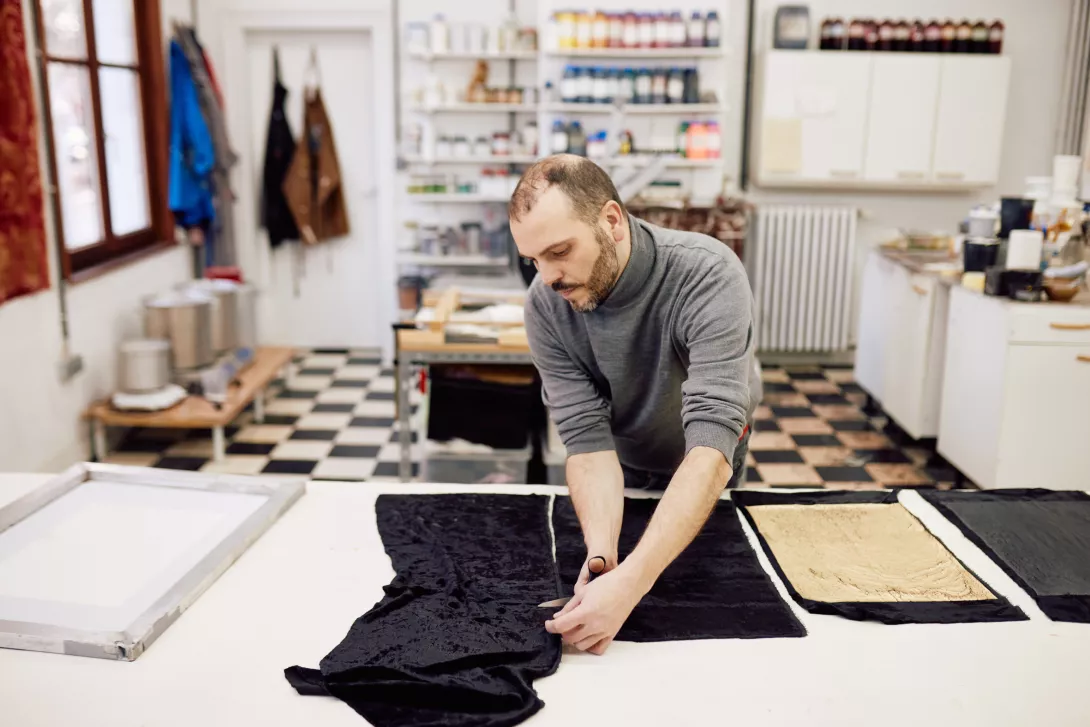Place du Nouveau Marché aux Grains 10
Nieuwe Graanmarkt 10
1000 Brussels
Nieuwe Graanmarkt 10
1000 Brussels
contact@mad.brussels
+32 2 880 85 62
+32 2 880 85 62

"I am a true craftsman and my inspiration comes from doing."
Interview with Daniel Henry
A new textile artwork decorates the wedding hall of the city hall in Brussels. After a call for projects by the Museum of the City of Brussels and MAD Brussels, the jury chose the design by textile designer Daniel Henry. His work “Velum Magneticus” blends well with the original decor and refers to love as a succession of moments with an almost magnetic attraction.
MAD spoke with Daniel Henry about his sources of inspiration, his vision for the future and his design for the wedding hall.